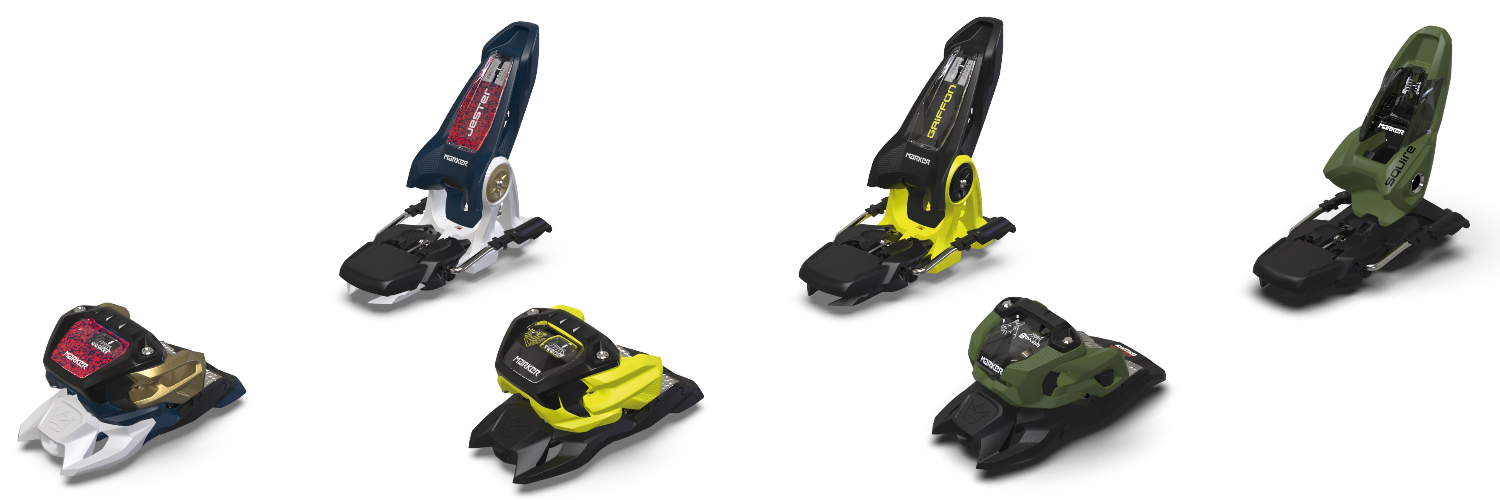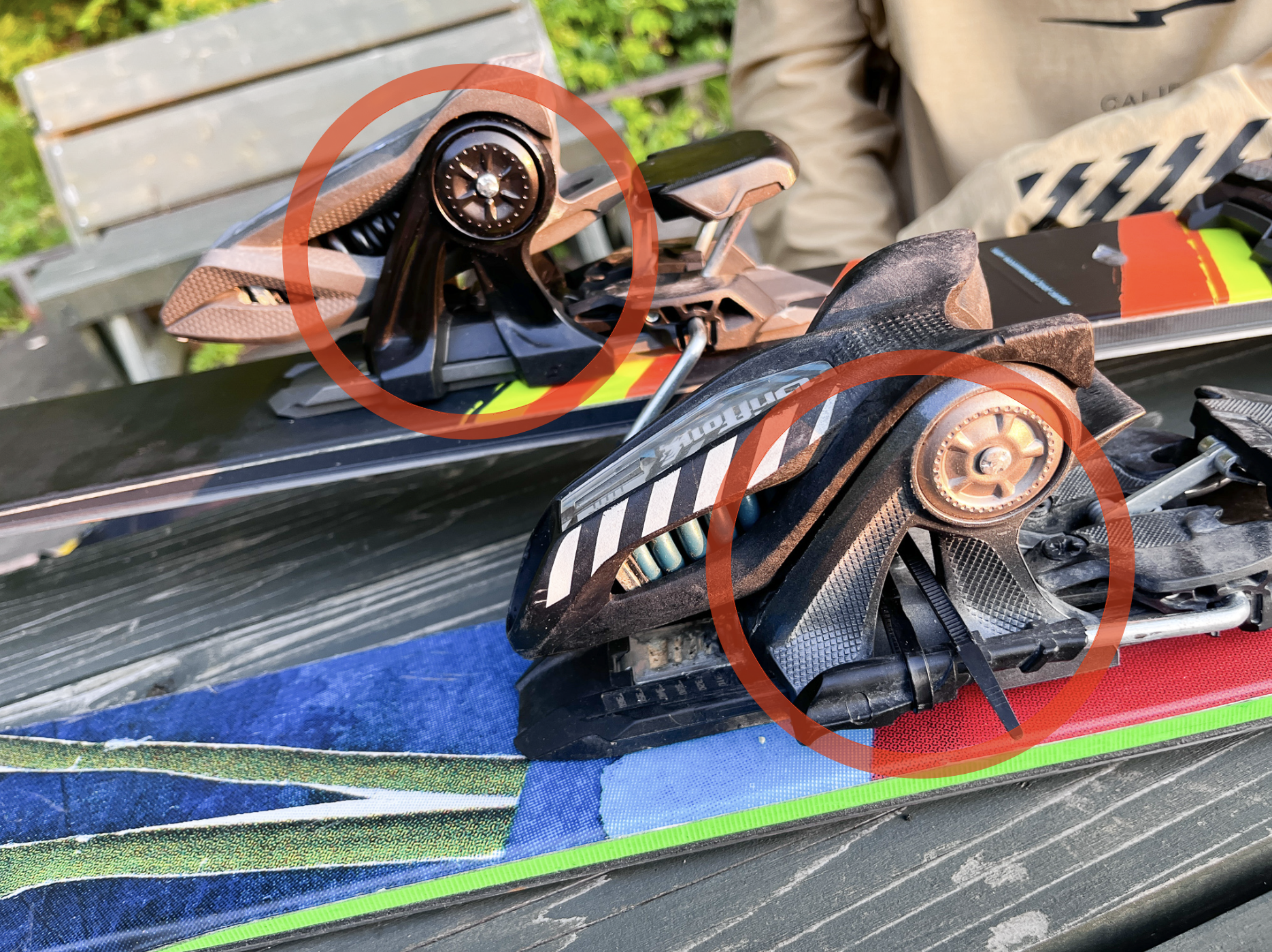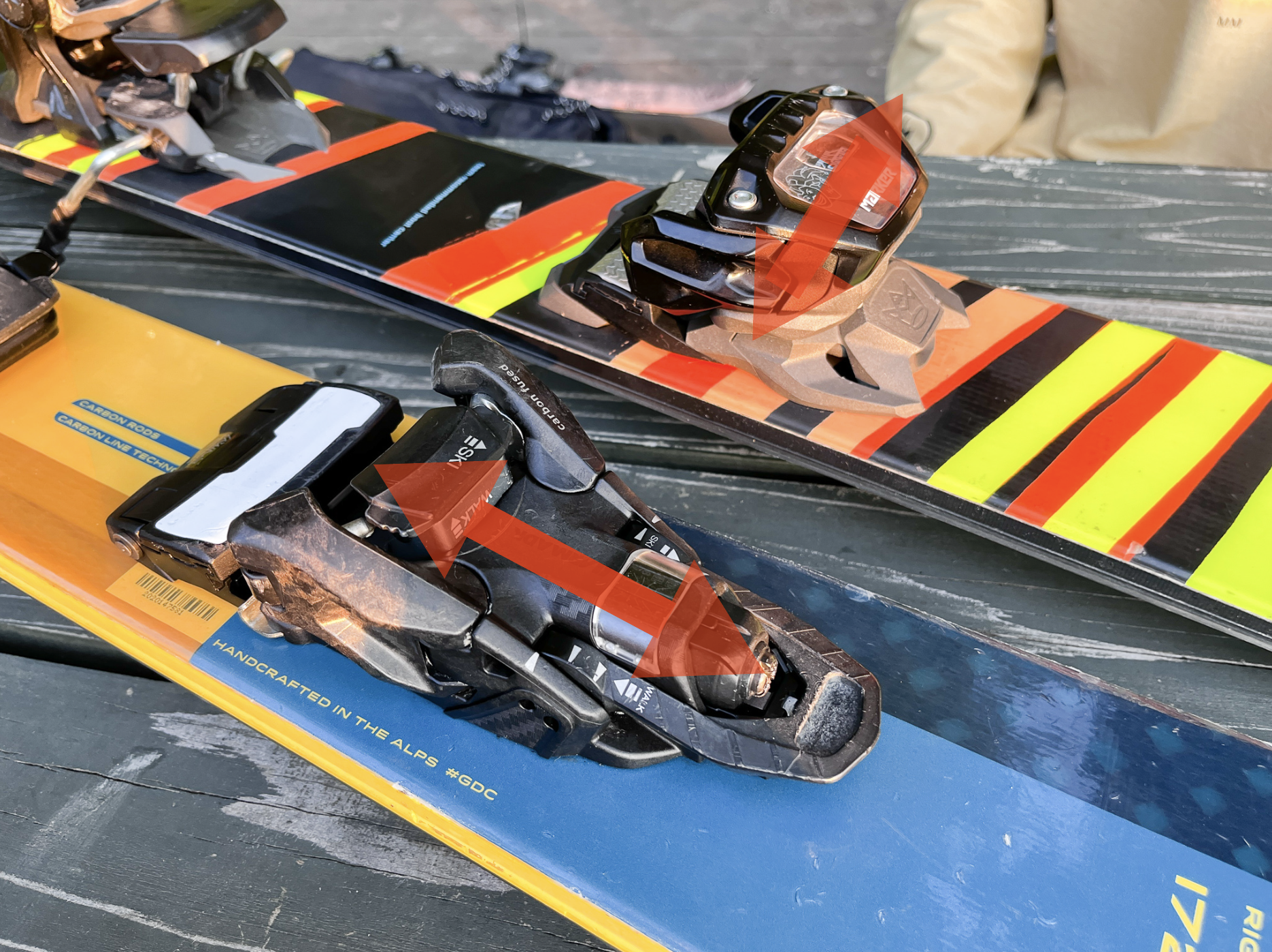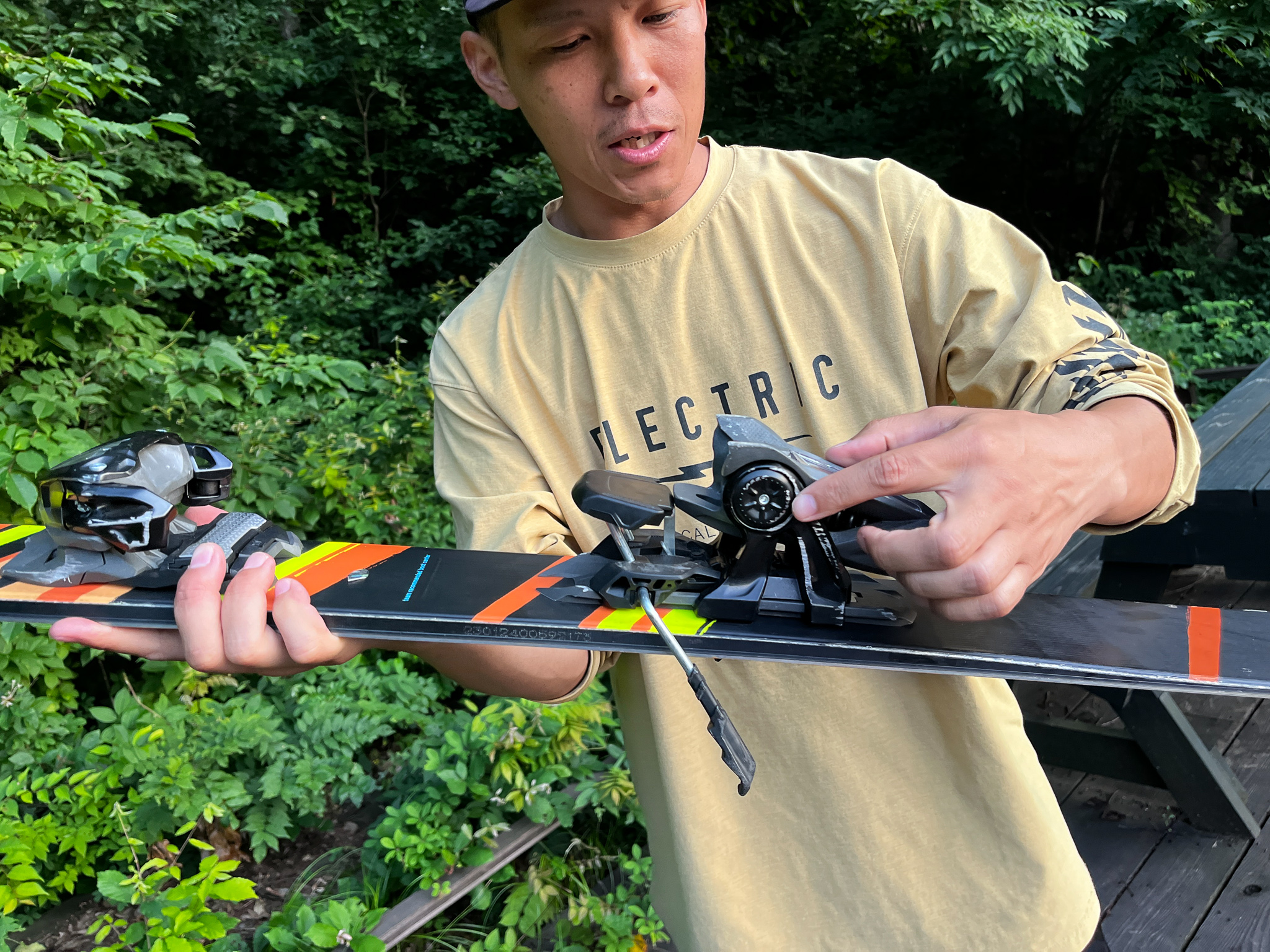Ski bindings are the gear that secures your skis and boots, but they do much more than that.
Although it looks like a simple piece of gear, it is actually quite profound. Therefore, if you neglect it, you may not be able to perform at your best, or it may lead to injury. Bindings play a very important role in skiing. Here, Takumi Toyama, also known as "Kin-chan," who is active as a coach in Japan and overseas, explains the basic roles and selection methods, as well as the various tricks that are rumored on the street.
Let's solve all the problems you've been having all at once.
Review the role of bindings
First, bindings are a device that secures skis and boots. Most importantly, it is equipped with a mechanism that allows it to be safely removed in the event of a fall. Bindings have a mechanism that allows them to come off when a certain amount of force is applied in a certain direction. If this doesn't come off, you could twist your ankle, or in the worst case scenario, it could lead to serious injury. “It holds skis and boots in place, but comes off safely.” A binding is a delicate mechanism that fulfills two contradictory roles.

So how do you actually choose?
First of all, I would like to clarify what kind of situation I would be skating in.
``Are you going to climb a mountain and ski?'' ``Are you going to jump or do tricks at the park?'' ``Are you going to go on a ski slope?''
Also, bindings need to be considered as a set with skis and boots.
For example, light skis, heavy bindings, and soft boots don't go well together, and you won't be able to take full advantage of their respective capabilities. Consider the combination of skis, boots, and bindings based on where you will be skiing. When skiing on a ski slope or in a park, the bindings you choose will depend on what kind of slope you are skiing at what speed and how many jumps you want to fly over.
I use marker bindings, so I'll give you an example using markers.
For example, if you are a person who primarily skis freeride in parks or on the slopes,
●High spec class "Jester"
●Middle class "Griffon"
●Entry class "Squire"

These three are your options.
If you like riding at high speeds on rough roads, it is better to choose high-spec bindings.
This is because the materials used for the binding are different, so the rigidity of the binding itself, in other words, the way power is transmitted, is different. For example, Jester and Griffon look similar, but they are made of different materials. Where the Jester uses metal parts, the Griffon uses resin parts to reduce weight. The Jester is able to transmit power to the ski more firmly, and the weight of the binding itself allows for stable skiing even at high speeds. On the contrary, the griffon is lighter and can be considered easier to handle even by people with less muscle mass. As an image, there is a difference in the sense of stability between a luxury sedan and a light car that can reach 120km/h. I think it's easy to understand.

In addition, bindings that are highly rigid and transmit force easily also transmit force from the snow surface to your body.
Therefore, the fatigue in your legs accumulates, especially when you ski on rough roads. In other words, not all bindings are necessarily highly rigid, but you should decide which binding is best for you based on your own sliding style, slope, speed range, and muscle mass (weight).
High spec ski gear is definitely better! That's not to say, each person has an optimal solution that suits their skating style. There are no criteria for deciding which binding should fit your weight and speed, so we recommend going to a ski shop and consulting with the shop's staff before making your selection. For those who only ski the Pistenbahn slopes, or those who want to go into the backcountry, bindings other than the three models listed above are candidates. It would be a good idea to explain in detail how you skate.
Release value is common to all manufacturers
I mentioned that stiffness varies depending on the material, but the release value is the same for all manufacturers. For example, the "release value 9" of the marker binding and the "release value 9" of the Salomon binding are the same. This standard is standardized by all manufacturers and is called the DIN standard. Even if that manufacturer's release value is 9, it does not mean that it is more likely to deviate from the release value of 9 than another manufacturer's release value. This is true for all bindings and there are no exceptions as only bindings that have passed the tests to meet the DIN standard are currently on sale.
Vertical spring? Horizontal spring? The marker places the center of gravity of rotation at the feet...
You may not usually know this, but bindings contain springs. The strength of the release value is adjusted by loosening or tightening the spring. Most marker bindings have a horizontal spring in the toe piece and a vertical spring in the heel piece. Many manufacturers also have vertical spring toe pieces. The reason why the marker uses a horizontal spring in the toe piece is to bring the center of gravity closer to the feet, reducing centrifugal force and "lightening the swing weight." Some manufacturers include the spring in the heel piece in the base of the heel piece, but the marker is in the heel piece itself. This brings the center of gravity closer to the center of the ski and reduces swing weight when the boot is pressed down and the binding is raised.

This is a mechanism designed to make it easier to perform freestyle spinning tricks. Therefore, they are easy to use for parks and jumps, but they also have the advantage of improving ski maneuverability and edge grip when skiing normally on the slopes. Also, since the spring of the heel piece is not in the base, but in the heel piece itself, the force to hold it down from above is stronger, and the feeling of holding is increasing.

There can be no false release.
Occasionally, it will come off on its own when you don't intend to, and some people sometimes refer to this as ``erroneous release'', but this is because ``a certain force is applied in a certain direction'' at that time. It did not come off due to some kind of malfunction in the gear mechanism. There's a clear reason why it's gone. For example, the boot and binding settings may not match, the toe or heel of the boot may be worn out, or the boot and binding may not fit properly.
So, when you think, ``Huh? It suddenly came off,'' please consider the settings, the condition of the boots, and whether the binding is suitable for your weight and sliding style.
Light but justice?
If you are a beginner/beginner, I think lighter bindings are definitely better. Squier markers are recommended because they are lightweight. It's easy to carry and easy to turn. I think the Squire is also good for people who want to do high-speed tricks with park items. If you don't have much speed, a light binding is fine.
However, for those who ski at high speed, it is better to choose bindings made of rigid and heavy materials such as griffon or jester, so it is not necessarily the case that a lightweight binding is better for everyone.
How is the binding installed?
This is a difficult question that I get asked a lot (lol).My
personal guideline is that if you want to ski in the park, I think it's best to go about 3cm back from the middle of the actual length of the ski. This is because it is easy to slip on the switch, and it is easy to stabilize when rotating.
For those who primarily ski powder or ski slopes, a 3 to 6 cm back is recommended. After all, the shorter the tail, the better it will "get out" when turning. Of course, each ski has a recommended binding position pre-marked. That's what the manufacturer recommends after repeated tests, so I think there's no problem with installing it there.
However, if you still want to set up the bindings in a position that suits your personal preference, I think it would be a good idea to find the position you like by asking people to slightly shift the binding position at a ski test drive event, and then comparing the glide.
By the way, for the past few years, I've been setting all park skis back 1.5cm from the center of the actual length. Powder skis are 3cm back. Even though it's a powder-type board, I sometimes do tricks on it, so I keep it at 3cm back so as not to lower it too much.

Bindings don't often get the spotlight, but they are an important piece of gear that is directly linked to safety and sliding performance. Choose the one that suits you and live a comfortable ski life.
PROFILE
Takumi Toyama and Kumi Oyamata
are affectionately nicknamed "Kin-chan" after the historical drama "Kin-san of Toyama".
After being active as a freestyle ski slopestyle athlete, he has been engaged in lessons for many years both in Japan and abroad as a coach. He uses humor in between explanations of logical tricks to make people laugh and make the lessons fun. He runs the freeski lesson site ``freeskiheadz.com'' and also provides various information related to freeskiing on YouTube. Sponser/ @volkl_japan , @electric_japan , @bn3th_japan , @ebsmission , retailerpole
https://www.instagram.com/freeskiheadz.com_t_yama/

